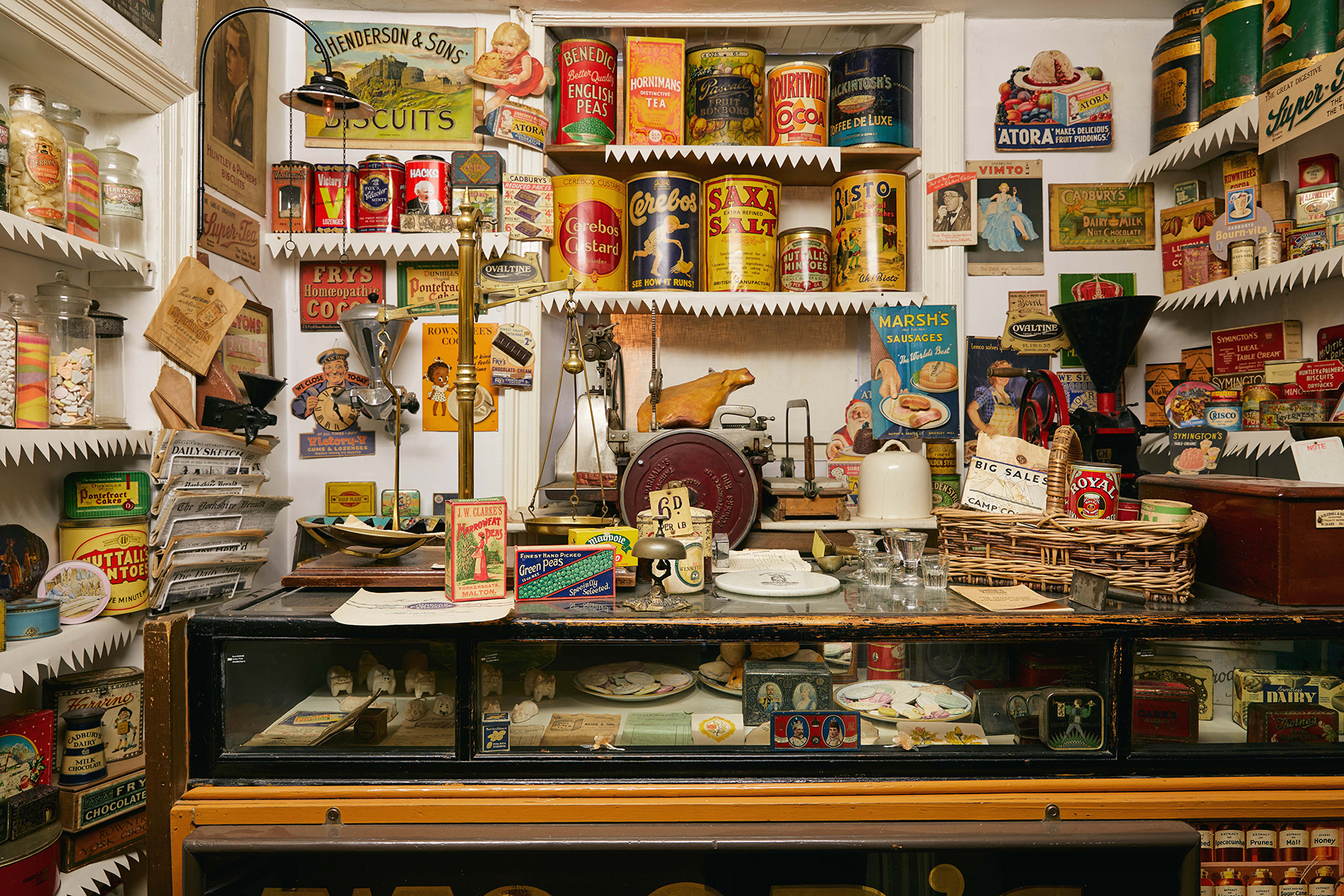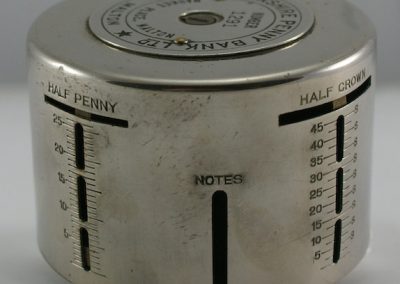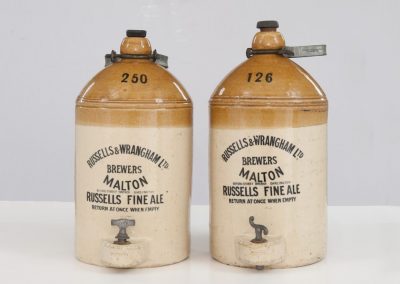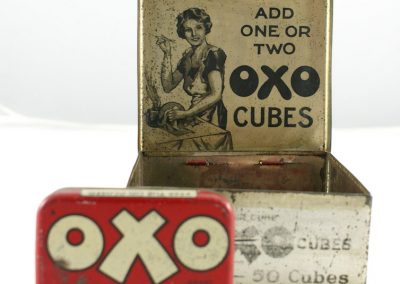Penny Bank Money Box
Woodhams Stone Collection, Norton, North Yorkshire
Penny Banks were set up to support the very poorest members of society to save money by accepting very small deposits. As the sums increased, these could then be deposited in a savings bank. Penny Banks could be found across the region during Victorian times and in the first half of the twentieth century.
These metal boxes were kept by a family, each with a unique ID number. The Penny Bank kept the key to prevent the family from raiding the money box when short of money, although sometimes the boxes were forced open.
This savings tin or money box is in the Woodhams Stone collection.
You might have walked past a Penny Bank!
This photo shows the Yorkshire Penny Bank in the market town of Kirkbymoorside. It’s part of the collection of Ryedale Folk Museum.
Watch the Video – to explore this object with your group
Watch The Video With Subtitles
Talking Points
Do you think the money box contains a lot of money?
Do you think it was a good idea for the bank to keep the key? Would you let someone else keep the key to your money box? If so, who?
Why might it be important to save money?
Do you agree with the saying ‘look after the pennies and the pounds will look after themselves’?
Have you ever raided a money box? What did you want the money for?
Compare this money box with one you might have at home – how is it different?
Vocabulary
Denomination – the value of a coin (or banknote or postage stamp), e.g. one penny, one pound

Museum Location
Hands on History
You can visit and explore a range of heritage ‘shops’ in museums across North Yorkshire, including at Richmondshire Museum, Ryedale Folk Museum and Beck Isle Museum (featured) in Pickering.
You can explore more of the Woodhams Stone Collection online.







